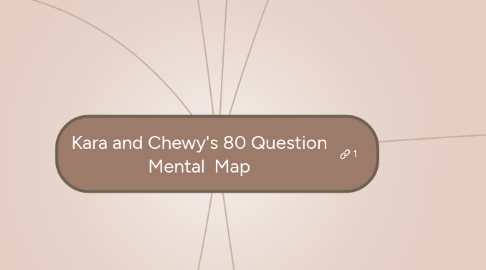
1. Innovation/Knowledge
1.1. University/Institutional Influence
1.1.1. Q73: University Influence
1.1.2. Q32: Institutional Structures and Awareness
1.2. Learning
1.2.1. Q76: Current Urban/Social Structure
1.2.2. Q68: Sustainable Knowledge
1.2.3. Q10: Strategies to Change Urban Settings
1.2.4. Q11: Evaluate Examples of Urban Design
1.2.5. Q27: Urban Sustainability Assessments
1.2.6. Q28: Inter- and Transdisciplinary Research Approaches
1.2.7. Q35: Social Innovations
1.2.8. Q36: Ethical Innovations
1.3. Definition
1.3.1. Q70: Innovation
1.3.2. Q69: Innovation Hub
1.3.3. Q30: Metaphors to Understand Cities
1.4. Technology
1.4.1. Q19: Technology on Using UHI productively
2. Governance
2.1. Benefits/Problems
2.1.1. Q61: Detriments of Urban Governance/Regimes
2.1.2. Q62: Participatory Governance and Sustainable Culture
2.1.3. Q64: Environmental Injustice and Emergence
2.2. Responsible Parties
2.2.1. Q63: Decision Making Process
2.2.2. Q26: Key Elements to Environmental Ethic & Stakeholders
2.3. Systems/Laws
2.3.1. Q49: Internet Revolution
2.3.2. Q78: Scientific Theory of Cities
2.3.3. Q4: Policy Options to Climate Change
2.3.4. Q17: Urban Governance
2.3.5. Q31: Why Be Sustainable?
2.4. Structure
2.4.1. Q14: Top Down vs. Bottom Up
2.4.2. Q20: UHI Technology and Urban Policy
2.4.3. Q33: Urban Ecosystem Governance
3. (Un)intended Effects
3.1. Q80: Increased Size in Cities
3.2. Q48: Gentrification
3.3. Q65: Solutions to Unintended Consequences
3.4. Q71: Unintended Consequence Cycle?
3.5. Q13: Local Areas Vulnerability to Climate Change
3.6. Q37: Innovation Dilemma
3.7. Q38: Dynamics of Urban Innovation
4. Socio-economical
4.1. Financial
4.1.1. Q45: Reshaping Economy
4.2. Urban Experience
4.2.1. Q55: Social Cooperation
4.2.2. Q54: Phenomenology in Cities
4.2.3. Q56: Psychological Stress
4.2.4. Q29: Urban Economic Infrastructure
5. Cultural
5.1. Phoenix (American Cities)
5.1.1. Q75: Drivers of Pre-Colonial City Collapse
5.1.2. Q85: Individualism Shape American Cities
5.2. Hamburg/Luneberg (European cities)
5.3. Values/Norms
5.3.1. Future generations
5.3.1.1. Q66: Personal Values Changing Over Time
5.3.1.2. Q21:Future Vision
5.3.2. Current Generations
5.3.2.1. Q9: “Unconscious Efficiencies”
5.3.2.2. Q22: Nature Centered Approach
5.3.2.3. Q40: Consumer Behavior and Urban Metabolism
5.4. History
5.4.1. Q23: Car Culture
6. Environmental
6.1. Climate
6.1.1. Q42: Perfect Moral Storm
6.1.2. Q2: UHI Mitigation --> ventilation pathways
6.2. Impacts
6.2.1. Q81: Environmental justice/ equality issues
6.2.2. Q5: Role of Zoological Parks and Gardens in complex sustainable cities
6.2.3. Q12: Frontiers to Sustainable Urban Metabolism/ Food
6.2.4. Q34: Authentic vs. Designed Nature
6.3. Biophilia
6.3.1. Q72: Evaluating Trade-offs
6.3.2. Q74: Naturalize City Good For Well Being
6.3.3. Q46: Re-establishing Connection b/w Man and Nature
6.3.4. Q51: Nature (parks,gardens) / sustainable culture in cities
6.3.5. Q7: Solution outcomes of nature in cities/ society
6.3.6. Q67: Indicators of a “biophilic” city? Tempe/ Lunerburg
6.4. Historical Approaches
7. Structure(?)
7.1. Identity
7.1.1. Q53: Community Emergence within Cities
7.1.2. Q58: UHI techniques effects on Urban Culture
7.1.3. Q59: Shared Common Sustainability Understanding
7.1.4. Q15: Urban Alienation
7.1.4.1. Q47: History of Wildlife in Urban Environments
7.1.5. Q16: Sense of Place
7.2. On surrounding environements
7.2.1. Q57: Urban Crowding
7.2.2. Q8: City/Rural Life
7.2.3. Q24: Walking Effect on Viewing Cities
7.2.4. Q39: New Urbansim
7.3. Values
7.3.1. Q50: Sustainability Ethic
7.3.2. Q25: City Life Virtue
7.4. Informal Rules
7.4.1. Q3: Order/Perception/Safety
7.4.2. Q18: Urban Regimes
7.5. of cities
7.5.1. Q83: Balance of Community and Diversity
7.5.2. Q79: Scaling Laws
7.5.3. Q80: Consequences of Increased Density
7.5.4. Q84: Space relation to social/cultural
7.5.5. Q6: Whom is City Good
